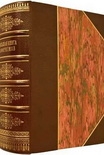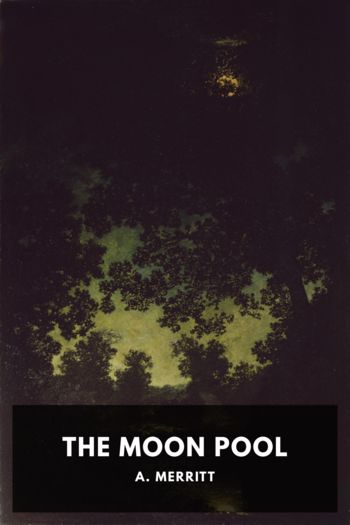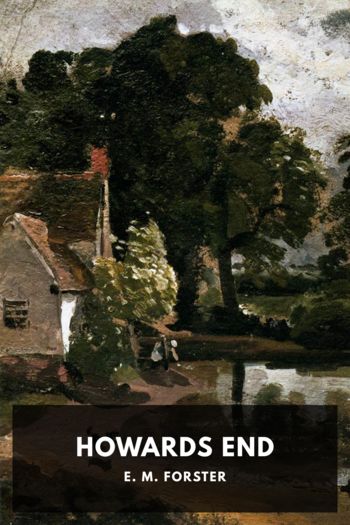How to Become a Witch, Amber K. [new books to read .txt] 📗

- Author: Amber K.
Book online «How to Become a Witch, Amber K. [new books to read .txt] 📗». Author Amber K.
Witches, and the ways in which they practice their craft, are as diverse as the myriad leaves of a great forest. So, what is Witchcraft?
Witchcraft, sometimes simply called “the Craft,” consists of the arts, skills, and knowledge of the Witch, usually blended with a spiritual path guided by the Goddess and the Old Gods of nature. Some Witches prefer to call themselves Wiccan—it doesn’t have as much green-skin-and-evil-potions baggage as the word Witch. In many people’s minds, Wicca is a gentler form of the Craft, with a strong ethical and spiritual component that Witchcraft alone may not have.
We tend to use the term Witch and Wiccan interchangeably, because a Witch without ethics won’t last very long (see chapter 7), and most of the Witches we know do follow a spiritual path as well as practice the arts and skills of the Craft.
The word witch derives from the Old English nouns wicca and wicce, the masculine and feminine, respectively, meaning “sorcerer/sorceress.” The plural of both is wiccan, and wiccecræft was Witchcraft. In a turnaround in the mid-twentieth century, Gerald Gardner (sometimes called the father of modern Witchcraft) called the people practicing the tradition “the Wicca” and the religion “Witchcraft.” The more common usage today is to call the skill and art part “Witchcraft” and the religion part “Wicca,” but the boundary between them is not always clear.
The meaning of warlock
In popular movies, women are Witches and men of the Craft are—warlocks? Not actually. The term warlock is used by most Witches only to mean a traitor or oathbreaker—especially one who has betrayed the coven to those who intend harm against it. Never call a man a warlock unless you mean it to be a dire insult. A man in the Craft is called a Witch.
Witchcraft, as used in this book, is a combination of magick and a spiritual practice based on the sacredness of nature. We can work magick to make changes in ourselves and the world around us, but because everything is sacred, we must use our skills wisely and avoid harming ourselves or others.
The Roots Of Witchcraft And Wicca
Witchcraft is derived from three primary sources: folk religion, shamanism, and ceremonial magick. It is not a “revealed religion” like Judaism, Christianity, or Islam. It has no founder, prophet, or holy scripture, and no single date when it originated.
It just grew. It is a mixture of tradition, revival, re-creation, inspiration, and imagination. It is sometimes called the Old Religion, and though some of its customs are probably very close to what our ancestors practiced, no one believes that it is the same as it was in ancient times. We are different from our forebears, children of an age of science and technology, and could not duplicate the original faith if we wanted to. Modern Witchcraft has deep roots, but they support and feed living branches that grow and change.
The folk-religion aspect is based in the pre-Christian religions, mostly those of Old Europe, although some Wiccans work with the deities and mythology of other cultures. In ancient times, religion wasn’t something you did on Sundays. Religion was how life was lived, in harmony with the natural world of which people were an integral part. At least that’s what we modern Wiccans tell ourselves, and it is the ideal to which we aspire. This is the part of Wicca in which the earth and all life is sacred.
This is a genuine religion, from the Latin re-ligio, meaning “to reconnect.” All things are connected, and we can influence the world because we are connected to it. In this way, the religion part and the practice part are interwoven and inseparable in our shamanic roots.
As we dance the cycle of the seasons and the phases of the moon, we are practicing the ancient shamanic roots of Wicca. As we heal with herbs, drumming, and energy work, we are practicing the ancient shamanic roots of Wicca. When we recognize a young person’s transition into adulthood, or any other rite of passage, we are practicing the ancient shamanic roots of Wicca. Calling on the energies of the four directions is an ancient practice, as are drum circles, ritual work in circles, and making decisions in a kind of tribal council. All echo our shamanic roots.
Shamanic correspondences are very direct and relate to the physical world—wearing the paw of a lion would grant the wearer the courage and power of the animal. The timing of ritual is organic—it’s time to do ritual when the moon appears full or when the buds begin to show on the trees.
The other part of Wiccan practice is based on ceremonial magick as practiced in the Middle Ages and Renaissance, in which the forms and ceremonial trappings were important in reaching one’s magickal goal, and belief in what you were doing was often more important than belief in any faith or religion. Magick was largely practiced outside of religion, just as some Witches today practice the Craft but do not subscribe to the spiritual part of Wicca.
The non-magickal folks
Just as the Witches and wizards of Harry Potter’s world had a name for non-magickal folk, so do real Witches. Harry and his friends call them “muggles”; we also call them “cowans.” The word is not an insult or put-down; it’s just a term for non-Witches or non-Pagans. Many modern Witches, though, think that the Potter books by J. K. Rowling are great fun, and many have adopted the word muggle as their new word for the people who don’t dance in the moonlight.
So when we call the elements, archangels, or watchtowers that correspond to the four directions, we are using ceremonial magick. When we make long or ornate robes for ritual or wear ritually symbolic jewelry, we are practicing ceremonial magick. Correspondences are usually very cerebral—colors have meaning, complicated sigils have meanings beyond their form, and all correspondences must be congruent. Any time we





Comments (0)